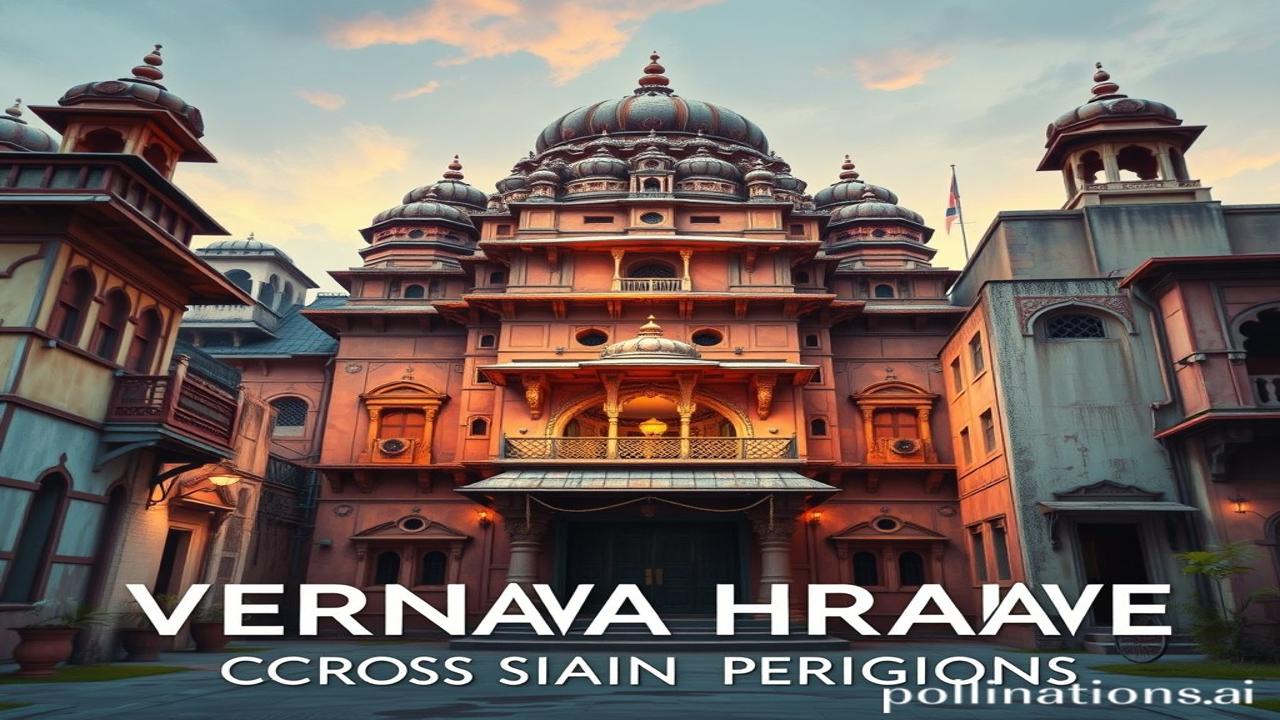Mitti Ki Khushboo, Pattharon Ki Zubaan: Exploring India’s Vernacular Architecture
Kabhi kisi purani haweli ke aangan mein kadam rakha hai? Jahaan waqt tham sa jaata hai, aur mitti ki mehek purani kahaniyan sunati hai. Those walls, that unique design… it’s all more than just bricks and mortar. It’s a conversation between the people, the land, and their dreams. Let’s dive into the fascinating world of Vernacular Architecture across Indian regions, where every structure whispers tales of its place and its people.
Kya Hai Yeh ‘Vernacular Architecture’? Kyun Hai Khaas?
Vernacular architecture, simple shabdon mein, is building by the people, for the people. It’s architecture that evolves organically, using local materials, climate-specific techniques, and reflecting the cultural values of the community. Imagine homes built from mud in Rajasthan to keep cool, or bamboo stilts in Assam to survive the monsoons.
This wasn’t planned by some big-shot architect sitting in a fancy office. It was the result of generations of experience, passed down from one builder to another, honed by trial and error, and perfectly adapted to the environment.
Why is it so important? Well, for starters, it’s incredibly sustainable! Local materials mean less transportation, less pollution, and a smaller carbon footprint. Plus, it’s beautiful! It embodies the unique identity of each region, showcasing the ingenuity and artistry of the people who built it. This architectural style is deeply rooted in our धरोहर (heritage).
Zameeni Sach: Log Aur Jeevan Ka Safar
Imagine a small village in Kerala. The air is thick with the scent of spices and coconut. Farmers work in paddy fields under the scorching sun. And their homes? Traditional tharavadu houses – large, sprawling structures with tiled roofs, courtyards, and wooden pillars carved with intricate designs.
These tharavadu houses weren’t just homes; they were centers of community life. Families lived together, celebrated festivals, and passed down their traditions. Ma Ambika would spend her days in the courtyard, grinding spices, while her grandchildren played hide-and-seek around the wooden pillars. The women often managed the household, while the men would discuss politics and farming in the common areas. Life revolved around family, faith, and the rhythm of the seasons.
Or, picture the vibrant colours of Gujarat. Think of the bhungas of Kutch – circular mud houses with thatched roofs, designed to withstand earthquakes and extreme weather conditions. These houses are like living canvases, adorned with colourful murals and intricate mirror work, reflecting the artistry and resilience of the people. One can almost hear the sounds of women singing traditional folk songs as they decorate their homes, a testament to their कला (art) and spirit.
Dharohar Aur Pehchaan: Aaj Bhi Zinda!
Even today, in an age of concrete jungles and glass skyscrapers, the spirit of vernacular architecture lives on. You see it in eco-resorts that incorporate local building techniques, in architects who are rediscovering the wisdom of traditional designs, and in communities that are striving to preserve their architectural heritage.
Think about the use of jaalis (latticed screens) in modern Indian homes – a direct descendant of the Mughal era, providing shade and ventilation while adding a touch of elegance. Or consider the growing popularity of mud houses and natural building materials, a conscious effort to reconnect with nature and embrace sustainable living. Vernacular architecture is a reminder of our roots, a symbol of our भारतीयाता (Indianness).
Mazedaar Tathya Ya Bhram-Bhanjak: Did You Know…?
Log samajhte hain ki vernacular architecture purani aur outdated hai. Lekin asli sach yeh hai ki it is incredibly relevant in the context of climate change and sustainable development! Traditional building techniques are often more energy-efficient and environmentally friendly than modern ones.
Another myth? That vernacular architecture is only for rural areas. Not true! Cities can also benefit from vernacular principles. Think of incorporating green roofs, using local materials, and designing buildings that respond to the specific climate of the region.
Drishya Aur Bhavnayen: Sensory Symphony
Imagine standing in a courtyard of a traditional Rajasthani haveli. The air is dry and warm, carrying the scent of sandalwood and spices. The walls are painted in shades of ochre and indigo, adorned with intricate carvings that tell stories of kings and queens. The sound of a sitar drifts from a nearby room, adding to the atmosphere of peace and tranquility. You touch the cool stone floor, worn smooth by generations of footsteps.
Or, picture yourself in a traditional Assamese bamboo house. The air is thick with the scent of rain and earth. The sound of crickets fills the night. You feel the gentle sway of the house as the wind blows through the bamboo groves. The texture of the bamboo walls is rough and uneven, yet surprisingly comforting. These houses seem to breathe with the rhythm of the land.
Antim Vichar Ya Uddharan: A Parting Thought
Vernacular architecture is more than just buildings; it’s a living legacy, a testament to the ingenuity, artistry, and resilience of the Indian people. It’s a reminder that true beauty lies in simplicity, sustainability, and harmony with nature. As the poet Kabir said:
“धीरे धीरे रे मना, धीरे सब कुछ होय |
माली सींचे सौ घड़ा, ऋतु आए फल होय ||”
Just as a gardener patiently waters a tree, knowing that the fruit will ripen in its own time, we must also nurture and preserve our architectural heritage, allowing it to blossom and enrich our lives for generations to come.
